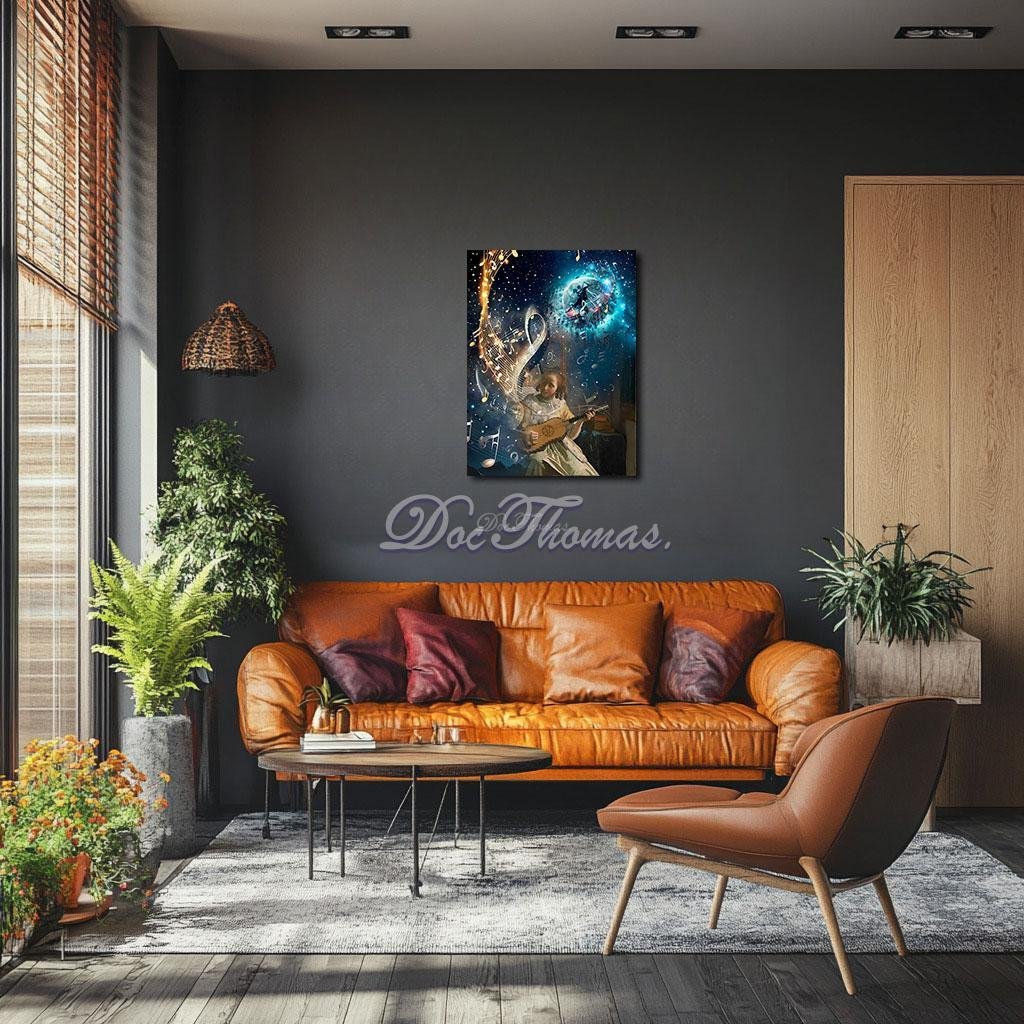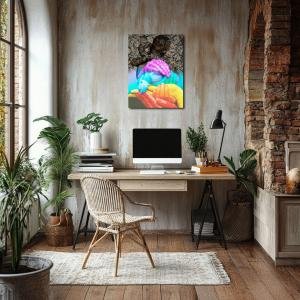Veins of Porcelain: Ballad of Celestial Chords
Veins of Porcelain: Ballad of Celestial Chords transforms Vermeer’s The Guitar Player into a cosmic sonata where music bends galaxies and a young girl becomes a conduit of celestial energy. Her once-domestic scene expands into an astral concert hall, filled with floating notes, radiant blues, and golden stardust. Each pluck of her instrument spirals into constellations, illuminating the universe with harmony. Dream and cosmos merge as the music she plays is no longer confined to air—it becomes a language of creation. Through a surreal blend of light, sound, and color, this reinterpretation makes Vermeer’s silent melody thunder across space.
Please see Below for Details…
Hotline Order:
Mon - Fri: 07AM - 06PM
404-872-4663
Veins of Porcelain: Ballad of Celestial Chords reimagines Johannes Vermeer’s The Guitar Player as a surreal cosmic rhapsody, where the music that once lingered in the chamber now bursts beyond walls, ascending into constellations. In this reinterpretation, the girl is no longer merely strumming a lute within the confines of a Dutch interior. She becomes an oracle of sound, conjuring galaxies with her fingertips. The strings vibrate not with melody, but with gravitational force—her song folds time, summons stars, and sculpts silence into shimmering pathways of light.
Vermeer’s warm, baroque elegance is retained in the girl’s gentle posture and delicate gaze, but her world has been transfigured. Behind her, the domestic setting dissolves into celestial infinity. A trail of luminous notes spirals around her like stardust, guiding the viewer’s eye to an erupting moon where a silhouetted dancer glides across staves of glowing music. The background, once a quiet panel of shadowed calm, is now a stage for universal resonance—planets swirl in time to her rhythm, and cosmic breezes ripple through the chords of the universe.
The color palette transitions from Vermeer’s familiar amber-browns and muted creams into iridescent blues, nebula-pinks, and radiant golds. Her cream dress, which once suggested modest femininity, now glows with the aura of myth—bathed in silver starbursts and kissed by lavender shadows. The guitar, retaining its rich honeyed hue, becomes the gravitational core of the piece—each pluck radiating sound waves rendered as radiant crescents and glowing motes. The night sky is painted with deep teals and infinite indigos, speckled with flecks of light like Pollock’s splatters gone galactic. The music notation becomes visual comet trails, bending with motion, emotion, and unseen gravity.
Every element in this dreamscape contributes to the concept of music as a portal. The glowing clef that curves into the corner of the piece is no longer a symbol—it is a key, unlocking the cosmos. The musical notes swirl with a logic beyond measure, coiling around her like protective enchantments or ancestral whispers. The entire canvas pulsates with rhythm. Light and sound intermingle. The girl becomes both the source and the vessel.
As the artist, my reimagining was guided by the belief that Vermeer’s women were always more than their quiet settings allowed. In this composition, I imagined what it would mean for her music to finally be heard—not just by those in her room, but by the entire universe. Her song is no longer bound to her social position or time period. It is the sound of freedom, of unseen strength, of divine artistry. I envisioned the sound of her instrument tearing through atmospheric silence, each note a frequency that reshaped the stars. The dancer across the moon was my tribute to music’s power to stir the soul—visible proof that somewhere, someone always responds to the music we create, even if we never see them.
Pollock’s influence lingers not in texture, but in chaos—that lyrical chaos that disrupts neat geometry and insists upon wild harmony. His gesture echoes in the bursting spheres and swirling constellations, where the eye loses its grip on linear structure and instead falls into rhythm. I wanted the chaos to feel joyous, not disorienting. I wanted the girl to be centered in this chaos, not lost by it.
Her expression remains one of poise—but look closer, and there’s wonder blooming just beneath her gaze. She isn’t surprised by the universe responding to her song—she knew it would. Her fingers gently press the strings, but they wield the force of creation. This is not a girl interrupted. This is a girl igniting.
Veins of Porcelain: Ballad of Celestial Chords does not seek to modernize Vermeer’s vision—it seeks to liberate it. It asks what happens when the quiet women of history are allowed to echo. When their music, their creativity, their essence are seen not just as private adornment but as cosmic force. The painting is not about music. It is about the sound of being seen.
Add your review
Your email address will not be published. Required fields are marked *
Please login to write review!
Looks like there are no reviews yet.










